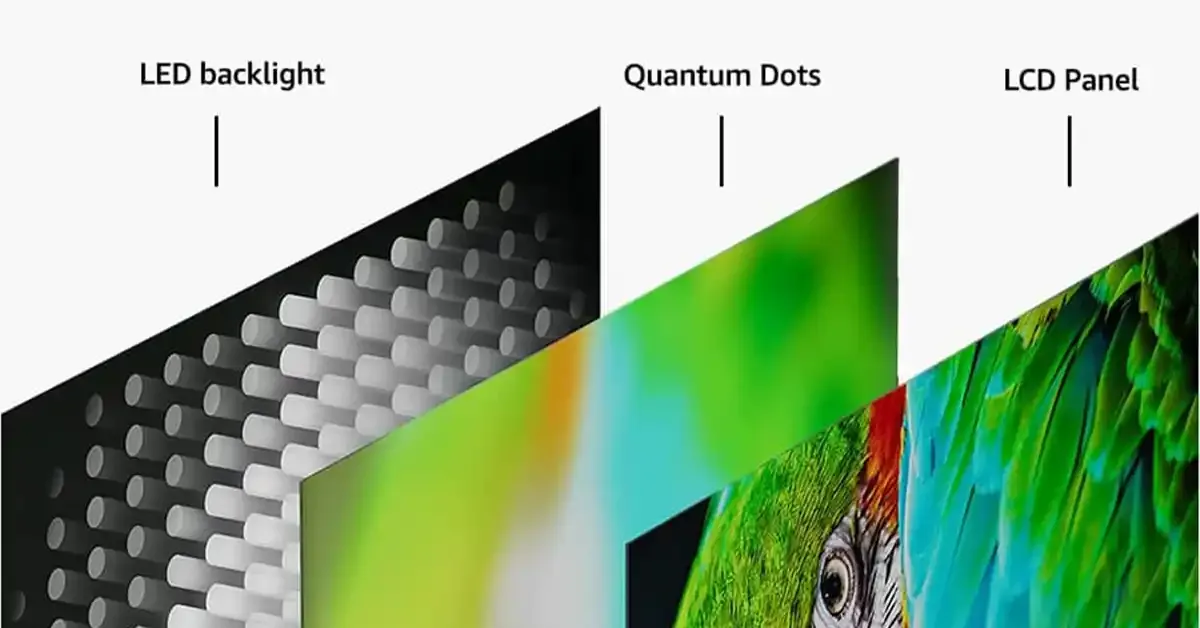4 Key Differences Between OLED and QD-OLED Displays
technology
Display technology continues to evolve rapidly, often leaving consumers wondering which option is truly better. You've likely heard of OLED (Organic Light-Emitting Diode) screens—renowned for their deep blacks, vibrant colors, and sleek design. But now, there's a new player on the scene: QD-OLED.
QD-OLED is the next step in display innovation, combining OLED's core strengths with the power of quantum dots to create an even brighter, more color-accurate, and energy-efficient viewing experience. But how exactly do these two technologies differ? Let's break down the four major distinctions that set them apart.
1. QD-OLED Is a Hybrid Evolution of OLED
At its core, QD-OLED (Quantum Dot OLED) is built on the foundation of OLED technology but enhances it by adding a layer of quantum dots—nanoparticles that improve color conversion.
In a traditional OLED panel, each pixel consists of organic materials that emit their own light when electrically charged. This results in perfect blacks because pixels can completely turn off, unlike LCDs which rely on backlighting.
With QD-OLED, the process changes slightly. The screen uses blue OLED light as its base layer. Quantum dots then transform part of that blue light into red and green, producing full RGB color without needing separate subpixels made of different organic materials.
This new method makes QD-OLED more efficient, provides more accurate color reproduction, and reduces the stress placed on organic components, especially the blue subpixels, which are typically the fastest to degrade in standard OLED panels.
2. Enhanced Brightness, Contrast, and Picture Quality
Both OLED and QD-OLED deliver superb contrast ratios and inky black levels. But QD-OLED goes a step further by offering higher peak brightness and greater color volume.
Thanks to the quantum dot layer, which precisely converts light, QD-OLED displays can achieve more vibrant colors and maintain clarity even in brighter environments. This is especially noticeable with HDR content, where QD-OLED shines—literally—with more vivid highlights and improved detail in both bright and dark areas.
In standard OLED panels, the organic materials—especially those that produce blue light—can degrade more quickly, limiting brightness over time. QD-OLED mitigates this with its design, allowing for sustained brightness without rapid wear, making it a better choice for long-term performance.

3. Better Energy Efficiency and Longer Lifespan
One of the most celebrated benefits of OLED over older technologies like LCD is energy efficiency. Since OLED pixels emit light individually, darker scenes use less power.
QD-OLED takes this efficiency to the next level. By using quantum dots to convert light rather than relying solely on organic materials, it needs less energy to produce vibrant and accurate images. This means lower power consumption, especially for bright visuals, making it a smart choice for energy-conscious users.
Another big concern with OLED has been burn-in—the ghosting effect caused by static images being displayed too long. While this issue still exists in QD-OLED, it's far less prominent due to its architecture. Since it relies more on quantum dots and less on organic light sources for color conversion, the wear is better distributed, minimizing the risk of permanent image retention.
4. Higher Cost (For Now), But Long-Term Value
Just like OLED displays were once prohibitively expensive compared to LED screens, QD-OLED is currently a premium product. Its advanced technology and limited availability mean that it comes with a higher price tag.
However, as production scales up and more manufacturers adopt QD-OLED panels, prices are expected to drop—just like OLED did in its early days. More importantly, QD-OLED offers longer lifespan and improved performance, making it a potentially better long-term investment.
If you're buying a display today and want the best combination of brightness, color fidelity, and efficiency, QD-OLED is leading the way. It's an enhancement over OLED in nearly every category, pushing the boundaries of what modern displays can offer.
Is QD-OLED Worth It?
If you're in the market for a premium viewing experience—whether for gaming, streaming, or professional content creation—QD-OLED is arguably the best display technology available today. It builds on everything OLED does well and addresses its key limitations.
Of course, price remains a factor. But as technology improves and becomes more accessible, QD-OLED could become the new standard for high-end screens in the coming years.
Whether you're a tech enthusiast or simply want the best screen money can buy, understanding the differences between OLED and QD-OLED can help you make a smarter purchase.
SIMILAR ARTICLES
Microsoft celebrates its 50th anniversary
On April 4 2025 Microsoft celebrates its 50th anniversarya milestone not many companies reach let alone with such continued relevance and influence From a tiny startup cofounded by Bil ...
READ THE ARTICLEWhy You Don’t Need a New Phone Every Year
Everyone has their own approach when it comes to upgrading smartphones Some people keep their phones until they no longer function while tech enthusiasts often cant wait to grab the latest model ea ...
READ THE ARTICLEDeepfakes Are Nearly Impossible to Detect
In todays world where artificial intelligence can generate images and videos so convincing that they easily deceive us the question is no longer if we will be fooledbut when Many peop ...
READ THE ARTICLE

